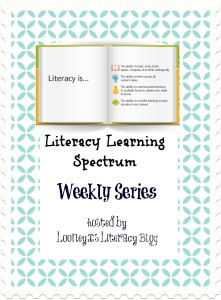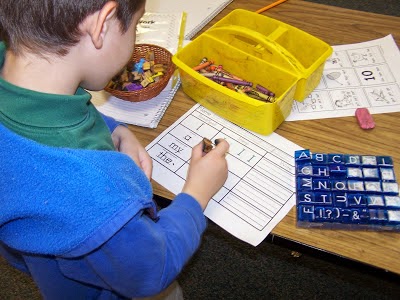 K-2 Literacy "Look Fors" - Part I K-2 Literacy "Look Fors" - Part I
I'm a firm believer that all six components need to be balanced and addressed simultaneously (as much as possible, anyway). The first step to addressing these areas appropriately is to consider brain development and the part it plays in learning ... read more
|
 K-2 Literacy" Look Fors" - Part II Phonics Edition K-2 Literacy" Look Fors" - Part II Phonics Edition
Phonics is the study of letters, sounds and letter patterns. In homes where children are exposed to texts, conversation is valued, and education is priority, oral language and text knowledge will be present (Unless there is a neurological difference present) . This makes it easy to begin and move through the phonics continuum quickly ... read more
|
 Literacy Learning Spectrum Weekly Series- Week One Literacy Learning Spectrum Weekly Series- Week One
I’m guessing since you are here that you are just as interested in the process we call literacy as I am. I’m constantly amazed and bewildered by this process and hope to have you join me in this journey ... read more
|

Literacy Learning and the Brain: What Teachers should Know (Week Two)
Scientists are finding we can and do change our brain everyday. Learning, experience, and everyday events cause synapses to fire in our brain creating stronger connections and deeper learning... read more
|
 Literacy Learning Spectrum: How Brain Studies Can Help Meet the Needs of All Learners Literacy Learning Spectrum: How Brain Studies Can Help Meet the Needs of All Learners
First we need to look at how the brain learns. According to Renate and Geoffrey Caine (2011), there are 12 principles: learning is physiological, the brain is social, the search for meaning is innate, the search for meaning occurs through patterns, patterning involves the emotions, the brain works with wholes and parts simultaneously, learning involves both focused attention and peripheral perception, learning is both conscious and unconscious, there are two approaches to memory; archiving isolated facts and skills and making sense of experiences, learning is developmental, learning is inhibited by threat associated with helplessness and/or fatigue, each brain is organized uniquely... read more
|
 Literacy Learning Spectrum: How the Brain Learns Literacy Learning Spectrum: How the Brain Learns
Part II: How the brain learns
#4. The brain’s search for meaning occurs through patterns. The brain learns when it it makes a connection with the perceived new information it is encountering. Building a new lesson off of known background knowledge will make learning more likely to take place.
|
 Bloomin' Blends, Digraphs & Chunks Bloomin' Blends, Digraphs & Chunks
Are you looking for some end of the year phonics review games to get your kiddos ready for the end of the year assessments? Then this is the game for you! This is perfect for short vowel, long vowel, blend, digraphs and chunks. The bright colors and fun spring graphics will motivate students to complete their "blooms" and work on decoding fluency. ...read more
|

Let's Talk... Word Work!
Word Work...I use this term loosely, as we all have our own definitions of what work work is. Because I’ve studied Reading Recovery, Daily Five and many other wonderful literacy programs out there; I tend to define word work as a time to focus on using letter and sound knowledge to each individuals advantage. I group these skills in an order for my own sanity but I know I have to look for and be aware of where everyone is at. It will never be in a linear pattern. ...read more
|







Comments
Post a Comment